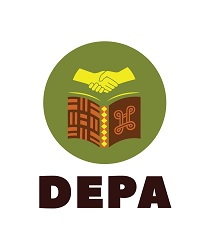Decolonizing Peace Education: Gender-Based Violence and Health in Ethiopia (DEPA-GBVH)
.jpg) Project Introduction
Project Introduction
The Ethiopia project was a collaboration between the London School of Hygiene and Tropical Medicine, Haramaya University, and the Family Guidance Association of Ethiopia. The project was led by Dr Markus Breines, with Ketema Degefa serving as the researcher coordinating the team and the collaboration with local partners.
The project aimed to improve maternal and child health by offering young people opportunities to learn strategies to avoid violence. The high prevalence of gender‑based violence in Ethiopia (Semahegn and Mengistie 2015) affected the health of women and children (Musa et al. 2021). The project explored how people experienced and narrated gender‑based violence to build an understanding of its impact on health. It worked with a local NGO in Harar, eastern Ethiopia, to conduct research primarily among women who had experienced gender‑based violence, using semi‑structured interviews and focus group discussions.
Overview
Ethiopia is a country that has seen a vast range of conflicts in its modern history. Civil war, conflicts with neighbouring states and ethnic violence have all taken place within the past decades. Currently, Ethiopia is again in the midst of violent conflict in the north of the country. While the long history of conflict has a complex set of reasons, gender-based violence is also common (Beyene et al. 2020). There are prevention and resolution mechanisms, such as elders negotiating and resolving conflicts (Hagmann 2007), but gender-based violence remains common in eastern Ethiopia (Semahegn and Mengistie 2015).
Research Questions
The research has explored the following questions to expand current knowledge and reduce gender-based violence:
- How does gender-based violence against women, and especially mothers, affect their and their children’s health and well-being? What are the current local understandings of gender-based violence in Harar?
- How can local knowledge, terminology and gender relations be used to decolonise peace education and develop educational materials that reduce gender-based violence?
Project Methodology
This qualitative project employs different methodologies to engage with the local population in Harar, a city in eastern Ethiopia, to collect data about gender-based violence. The project has used art methods as a dissemination strategy where the topic of gender-based violence was presented to audiences to offer them new ways of thinking about how to avoid such violence. The arts methods included theatre performances in secondary schools and a PhotoVoice activity with an exhibition open to invited guests. There were also multiple workshops with key stakeholders such as teachers and local government officials to create spaces to discuss and raise awareness about gender-based violence in the area. Research data were collected through semi-structured interviews with teachers, health professionals and other stakeholders. Focus group discussions were also used to learn about the scale and forms of gender-based violence.
Project Highlights
The Ethiopia project has achieved the following objectives:
- Established and maintained collaboration with local NGO to support its work on gender-based violence.
- Data collected on experiences of gender-based violence and how it affects maternal and child health.
- Multiple workshops with key stakeholders.
- Three theatre performances.
- PhotoVoice project and exhibition.
- Production of educational materials.
Educational Resources
The key outcome of this project is the production of educational materials for local schools. A five-day workshop was arranged to develop educational material based on the research findings. The educational material, a handbook designed to reduce gender-based violence, was created through collaboration between the local NGO, teachers, a representative from the gender department of a local university, as well as the regional youth, women and child affairs health office. 16 people attended the workshop and suggestions were made to make the material better aligned to the level of secondary school students and recommended dissemination beyond the schools we have been working closely with.
Additional funding was allocated to allow for further workshops to be held to receive further input on the developed educational materials from other stakeholders. 18 people attended and the materials were very well received, and it was suggested that we scale up and distribute the materials to all primary and secondary schools in the Harari region (76 in total). The participants also suggested including more pictures to make the design more attractive and to include some case scenarios and activities for the students. They also encouraged us to arrange teacher training to make the most out of the materials.
The materials are currently only for use in Ethiopia and have been translated into several languages.
Next Steps
The data collection and project activities have been completed, but additional funding was obtained and used to print additional copies of the handbook in Afan Oromo, Amharic and English, bringing the total number printed to 1900.These were distributed to three local secondary and three loacl primary schools as well as to the partner NGO working facilities, two health clinics and one library.
We are currently exploring the possibilities for further funding and how to expand the project in the coming year.
Impact
A teacher involved in the project said, ‘Our school gave training on the educational materials to around 1700 students. The material helped students learn what GBV means, how they can protect themselves from harassment, where to report if someone assaults them, and where to go to get care and support. In addition, the students are aware of how they stand for their rights. It created spaces for the students to bring issues to their teachers, speak out about their problems, and get advice. It taught them how they can stand up for their rights’.

